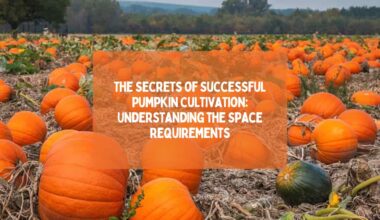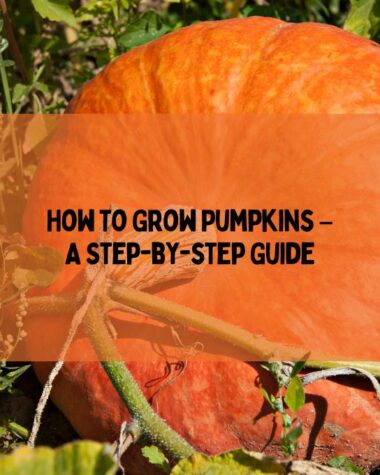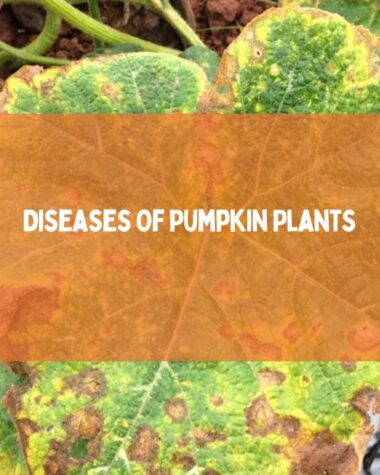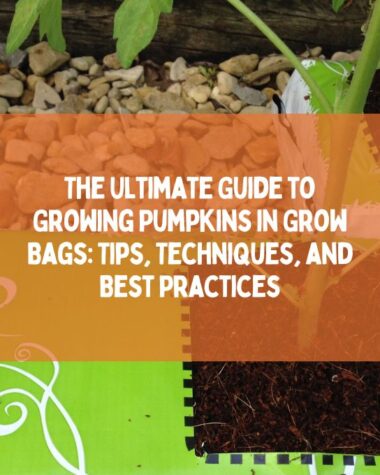Welcome to this comprehensive article on pumpkin heirloom seeds! In this guide, we will explore the fascinating world of pumpkin heirloom seeds, their history, cultivation, and the numerous benefits they offer.
Whether you are a seasoned gardener or a curious enthusiast, this article will provide you with valuable insights into the world of pumpkin heirloom seeds.
So, let’s dive in and discover the wonders of these remarkable seeds!
What are Pumpkin Heirloom Seeds?

Pumpkin heirloom seeds are the genetic legacy passed down from one generation to another. These seeds come from open-pollinated pumpkin varieties that have been carefully preserved for their unique characteristics, flavors, and adaptability.
Unlike hybrid seeds, which are the result of cross-pollination between two different parent plants, heirloom seeds remain true to their parent plant’s traits.
This means that the plants grown from heirloom seeds will closely resemble the original plant in terms of appearance, taste, and other features.
A Brief History of Pumpkin Heirloom Seeds
Pumpkins have a rich history that dates back thousands of years. Indigenous people in Central America were the first to cultivate pumpkins, which is where they got their start.
These early pumpkins were smaller and had a bitter taste. Over time, through selective breeding, different varieties of pumpkin emerged, each with its own unique characteristics and flavors.
The cultivation of pumpkin heirloom seeds became popular among early settlers in North America. These seeds were treasured for their reliability and ability to adapt to local growing conditions.
Heirloom pumpkin seeds were carefully saved and passed down through generations, ensuring the preservation of valuable traits.
Related Reading
- How And When To Sow Pumpkin Seeds?
- How To Grow Mini Pumpkins From Seeds?
- How to Harvest Pumpkin Seeds for Planting?
- Diseases of Pumpkin Plants: Identification, Treatment, and Prevention Strategies
Advantages of Pumpkin Heirloom Seeds

Biodiversity
Pumpkin heirloom seeds contribute to the preservation of biodiversity by maintaining a wide range of genetic traits. This diversity is crucial for the long-term sustainability of our food systems and helps protect against the risks of disease outbreaks and environmental changes.
Flavorful Varieties
Heirloom pumpkins offer a wide array of flavors, ranging from sweet and nutty to rich and savory. These unique flavors are often lost in commercial hybrids, making heirloom varieties a favorite among chefs, food enthusiasts, and those seeking culinary delights.
Adaptability
Heirloom pumpkin seeds have adapted to various climates and growing conditions over generations, making them more resilient and versatile than many modern hybrids. They can thrive in diverse environments, providing gardeners with a wider range of options for cultivation.
Seed Saving
One of the most significant advantages of heirloom seeds is their ability to reproduce true to type. This means that you can save seeds from the plants grown and use them for future planting, ensuring a sustainable seed supply for years to come.
Cultural Heritage
Pumpkin heirloom seeds carry the cultural heritage and stories of generations. By growing heirloom varieties, you become part of a long-standing tradition that celebrates the richness of history and promotes a connection to the land.
Growing Pumpkin Heirloom Seeds

Now that we understand the importance of pumpkin heirloom seeds, let’s explore the process of growing them.
Here are the key steps to get started:
1. Selecting the Right Variety
Choosing the right variety of pumpkin heirloom seeds is crucial for a successful harvest. Consider factors such as the growing season, space availability, flavor preferences, and desired use (cooking, carving, etc.).
Some popular heirloom varieties include:
- Jarrahdale: A stunning blue-gray pumpkin with sweet, flavorful flesh.
- Cinderella: A French heirloom known for its deep orange color and excellent flavor.
- Connecticut Field: A classic pumpkin variety, perfect for carving or baking.
- Musquee de Provence: A striking heirloom with a sweet and nutty flavor.
Research and select the variety that best suits your needs and growing conditions.
2. Soil Preparation
Pumpkins thrive in well-drained, nutrient-rich soil. Prepare the planting area by removing weeds, rocks, and debris.
Amend the soil with organic matter, such as compost or well-rotted manure, to improve its fertility and structure. Aim for a pH level between 6.0 and 7.5, which is ideal for pumpkin growth.
3. Planting Seeds
Pumpkin seeds can be directly sown into the garden once the soil has warmed up and all danger of frost has passed. Make sure to plant the seeds about 1-2 inches deep, with a spacing of 3-5 feet between each plant.
Alternatively, you can start seeds indoors 2-3 weeks before the last expected frost and transplant them later.
4. Providing Adequate Care
To ensure healthy growth and an abundant harvest, pumpkins require proper care and attention.
Here are some essential care tips:
- Watering: Keep the soil consistently moist but not waterlogged. Provide regular watering, especially during dry spells. Mulching around the plants can help retain soil moisture.
- Fertilization: Apply a balanced organic fertilizer before planting and again when the vines start to develop. Follow the package instructions for proper dosage and application.
- Weed Control: Regularly remove weeds around the pumpkin plants to minimize competition for nutrients and water.
- Pest and Disease Management: Monitor for common pumpkin pests like squash bugs and cucumber beetles. Consider organic pest control methods, such as handpicking and using insecticidal soaps. Preventive measures like crop rotation can also help reduce disease risks.
5. Harvesting

Pumpkins are ready for harvest when their rinds harden and have a deep, consistent color. The stem should be dry and starting to crack.
Use a sharp knife or shears to cut the pumpkins from the vine, leaving a few inches of stem attached. Properly cured pumpkins can be stored in a cool, dry place for several months.
Conclusion
Pumpkin heirloom seeds are a treasure trove of flavors, diversity, and cultural heritage. By cultivating and preserving these remarkable seeds, we not only celebrate the history of our food but also contribute to the resilience and sustainability of our agricultural systems.
Whether you’re a passionate gardener or a lover of exceptional flavors, pumpkin heirloom seeds offer a world of possibilities.
So, embrace the journey of growing and savoring these unique seeds, and let the wonders of pumpkin heirloom seeds enrich your gardening and culinary experiences!
Related Reading
- Is it Dangerous to Eat Raw Carrots?
- 13 Tomato Gardening Hacks for a High-Yield Harvest
- Harvesting Courgettes: Storing And Preserving
- Cucumber Slicing: How to Slice a Cucumber Perfectly?
- A Comprehensive Guide to the Different Types of Evergreen Trees
FAQs about Pumpkin Heirloom Seeds
Can I save and reuse pumpkin heirloom seeds?
Yes, one of the remarkable aspects of heirloom seeds is their ability to reproduce true to type. By saving seeds from your heirloom pumpkins, you can continue the cycle and grow them again in the future.
Are pumpkin heirloom seeds suitable for organic gardening?
Absolutely! Pumpkin heirloom seeds are well suited for organic gardening practices. Their adaptability and natural resistance to pests and diseases make them an excellent choice for those seeking organic alternatives.
Can I grow pumpkin heirloom seeds in containers?
While pumpkins generally prefer ample space to grow, certain compact varieties can be successfully grown in large containers. Look for smaller-sized heirloom pumpkin varieties and choose containers with a capacity of at least 10 gallons.
Are heirloom pumpkins more difficult to grow than hybrids?
Heirloom pumpkins are generally as easy to grow as hybrids. They may require a bit more care and attention, but the rewards in terms of flavor, diversity, and sustainability make them well worth the effort.
What are some delicious recipes using pumpkin heirloom seeds?
Pumpkin heirloom seeds can be used in various culinary creations.
Here are a few ideas:
- Roasted Pumpkin Seeds: Toss cleaned pumpkin seeds with olive oil, salt, and your favorite spices. Roast them in the oven until crispy and enjoy as a tasty snack.
- Pumpkin Seed Pesto: Blend toasted pumpkin seeds with fresh basil, garlic, Parmesan cheese, olive oil, and a squeeze of lemon juice to create a flavorful pesto sauce.
- Pumpkin Seed Bread: Add pumpkin seeds to your favorite bread recipe for added texture and a nutty flavor.







